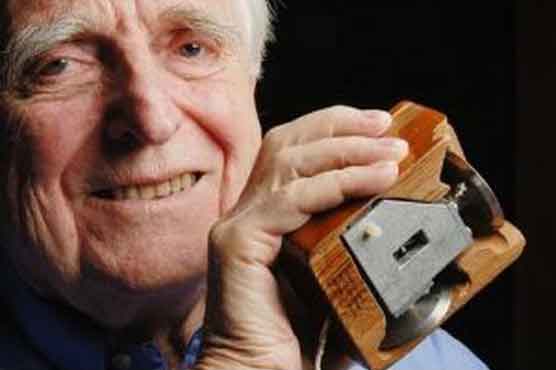Computer Visionary Who Invented the Mouse
http://www.nytimes.com/2013/07/04/t...f-the-computer-mouse-dies-at-88.html?hpw&_r=0
Douglas C. Engelbart was 25, just engaged to be married and thinking about his future when he had an epiphany in 1950 that would change the world.
He had a good job working at a government aerospace laboratory in California, but he wanted to do something more with his life, something of value that might last, even outlive him. Then it came to him. In a single stroke he had what might be safely called a complete vision of the information age.
The epiphany spoke to him of technology’s potential to expand human intelligence, and from it he spun out a career that indeed had lasting impact. It led to a host of inventions that became the basis for the Internet and the modern personal computer.
In later years, one of those inventions was given a warmhearted name, evoking a small, furry creature given to scurrying across flat surfaces: the computer mouse.
Dr. Engelbart died on Tuesday at 88 at his home in Atherton, Calif. His wife, Karen O’Leary Engelbart, said the cause was kidney failure.
Computing was in its infancy when Dr. Engelbart entered the field. Computers were ungainly room-size calculating machines that could be used by only one person at a time. Someone would feed them information in stacks of punched cards and then wait hours for a printout of answers. Interactive computing was a thing of the future, or in science fiction. But it was germinating in Dr. Engelbart’s restless mind.
In his epiphany, he saw himself sitting in front of a large computer screen full of different symbols — an image most likely derived from his work on radar consoles while in the Navy after World War II. The screen, he thought, would serve as a display for a workstation that would organize all the information and communications for a given project.
It was his great insight that progress in science and engineering could be greatly accelerated if researchers, working in small groups, shared computing power. He called the approach “bootstrapping” and believed it would raise what he called their “collective I.Q.”
A decade later, during the Vietnam War, he established an experimental research group at Stanford Research Institute (later renamed SRI and then SRI International). The unit, the Augmentation Research Center, known as ARC, had the financial backing of the Air Force, NASA and the Advanced Research Projects Agency, an arm of the Defense Department. Even so, in the main, computing industry professionals regarded Dr. Engelbart as a quixotic outsider.
In December 1968, however, he set the computing world on fire with a remarkable demonstration before more than a thousand of the world’s leading computer scientists at the Fall Joint Computer Conference in San Francisco, one of a series of national conferences in the computer field that had been held since the early 1950s. Dr. Engelbart was developing a raft of revolutionary interactive computer technologies and chose the conference as the proper moment to unveil them.
For the event, he sat on stage in front of a mouse, a keyboard and other controls and projected the computer display onto a 22-foot-high video screen behind him. In little more than an hour, he showed how a networked, interactive computing system would allow information to be shared rapidly among collaborating scientists. He demonstrated how a mouse, which he invented just four years earlier, could be used to control a computer. He demonstrated text editing, video conferencing, hypertext and windowing.
In contrast to the mainframes then in use, a computerized system Dr. Engelbart created, called the oNLine System, or NLS, allowed researchers to share information seamlessly and to create and retrieve documents in the form of a structured electronic library.
The conference attendees were awe-struck. In one presentation, Dr. Engelbart demonstrated the power and the potential of the computer in the information age. The technology would eventually be refined at Xerox’s Palo Alto Research Center and at the Stanford Artificial Intelligence Laboratory. Apple and Microsoft would transform it for commercial use in the 1980s and change the course of modern life.
.......












